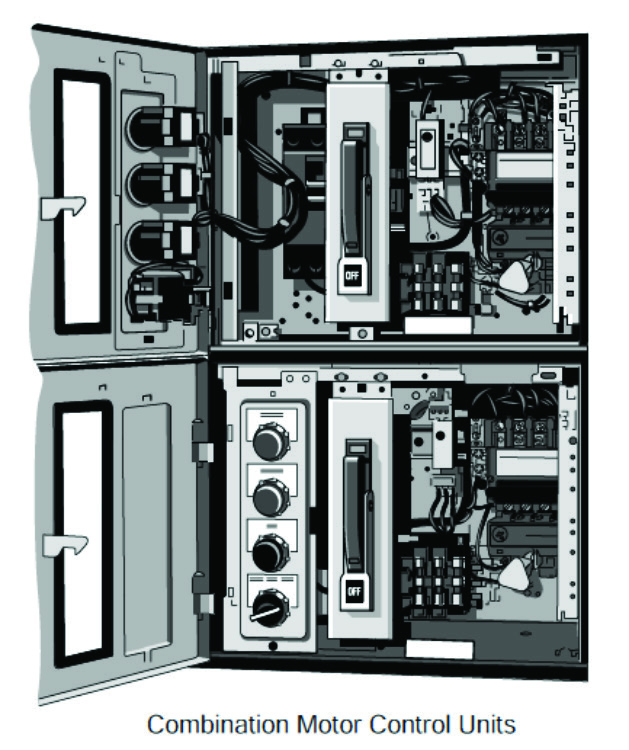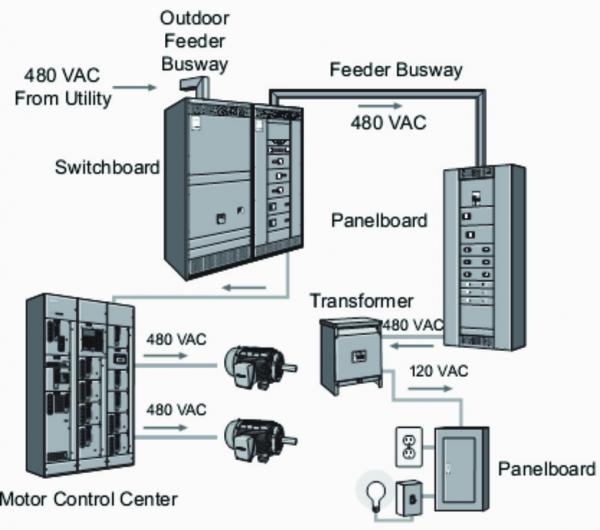The days are long gone when power to a motor was controlled with a knife switch. These were cumbersome and downright dangerous to man and equipment alike. Every electric motor has some form of controller, responsible for turning over (starting) the motor or motor-controlled equipment. These controllers offer differing features and complexity depending on the application, United States electrical codes require the use of a motor starter that meets NEMA’s National Electrical Code as well as all local electrical codes.
Today’s small centrifugal air compressors may have a motor starter built in to the compressor package. This is a common accessory for lower voltage packages of 230, 460, or 575 volts up to about 450 HP. The starter not only controls the power supply to the motor but protects the motor and wiring system from overloads caused by direct shorts or a faulty motor.
For medium voltage packages of 2300 or 4160 volts, high voltage packages and/or compressors above 450 HP, starters are often provided by the compressor supplier as a standalone shipped loose item for field installation or provided by a supplier of the customer. These can be locally installed near to the compressor or in the customer’s central motor control center commonly called a MCC.
An MCC is a floor-mounted assembly that includes one or more enclosed vertical sections, horizontal and vertical buses for distributing power and principally contains combination motor control units. Various certifying organizations have created standards on low, medium and high voltage controllers and motor control centers. A few of these standards include NEMA ICS-18-2001 and UL 845 for low voltage controllers less than 600 volts, as well as UL 347 for medium voltage control centers up to 7,200 volts.


The motor controller dictates how the motor will start and are made up of two key aspects, contactors and overload protection. Contactors control the electric current to the motor, with the core function of repeatedly establishing and interrupting an electrical power circuit. Overload protection protects the motor from drawing too much current and overheating. Optional features on some motor controllers include temperature monitoring and thermal sensors.
Centrifugal compressors commonly utilize one of three types of motor controllers, full voltage, reduced voltage and solid state.
Full Voltage Starters: Also known as across the line, full voltage starters are the simplest and oldest method of motor starting. As the name implies, they require full line voltage using up to 6-8 times full load amps during start up. Starting a motor with full voltage is similar to “dropping the clutch” in your automobile while revving the engine. Application considerations include mechanical stress on the motor and drive components as well as voltage dips. In some situations starting with full voltage can result in voltage dips not only in the customer’s facility but also neighboring users. Full voltage starting can be an economical solution if the system and components are properly designed to accommodate the resultant forces.
Reduced Voltage Starters: The two most common types of reduced voltage starters are wye-delta and autotransformer. Despite the term ‘reduced voltage starter’ the full line voltage is still being applied to the motor leads with reduced voltage occurring because of the electrical characteristic of the wye vs. delta relationship. Both of these electro-mechanical starters transfer a reduced amount of voltage initially and then step up to full voltage. Reduction of the starting voltage results in lower inrush amps and less stress on mechanical components. The star-delta starter requires a specifically designed motor. An autotransformer starter typically has three voltage settings – 50%, 65% or 80% of full voltage.
Solid State Starters: Also known as soft starters, solid state starter gradually applies power to bring the motor up to full speed over a longer period of time – usually in the range of 15 to 30 seconds helping to reduce demand on the power supply. Solid state starters are able to meet the starting requirements of the compressor while providing a smooth start and minimizing amps. These starters are very flexible and can be adjusted to match the application requirements. Solid state starters are the best choice for centrifugal compressor motors.

In summary, there are many viable methods to start centrifugal compressors. It is recommended to consult with the compressor manufacturer, local utility company and electrical contractor before making any decisions. Choosing the right starter will ensure equipment and electrical system reliability.
The Compressed Air and Gas Institute (CAGI) is the united voice of the compressed air industry, serving as the unbiased authority on technical, educational, promotional, and other matters that affect compressed air and gas equipment suppliers and their customers. CAGI educational resources include e-learning coursework, selection guides, videos, and the Compressed Air & Gas Handbook.
The Centrifugal Compressor Section consists of the following member companies:
|
|
|
|
|
For more information, visit the CAGI web site at www.cagi.org and follow CAGI on LinkedIn.
To read more articles on Compressed Air Standards, please visit www.airbestpractices.com/standards.
Visit our Webinar Archives to listen to expert presentations on Air Compressor Technology at https://www.airbestpractices.com/webinars.




